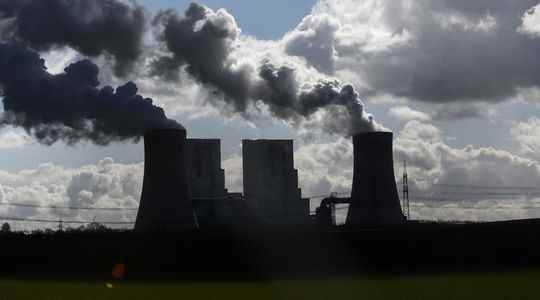Global carbon dioxide emissions from fossil fuel use are expected to rise by just under 1% this year, with an additional 300 million tonnes of CO2 released into the atmosphere, bringing the total to 33.8 billion. tons. Despite concerns about the effects of the current energy crisisthis increase is much less than that initially forecast, d‘after the international energy agency (IEA) which collected data from all over the world.
In 2021, it had been 2 billion tonnes of CO2 due to the rapid recovery of the global economy from the crisis triggered by the pandemic. The increase this year is largely due to electricity production and the recovery of the aviation sector after the trough generated by the Covid-19. According to the IEA, emissions were lower than last year thanks in particular to a strong expansion of renewable energies and electric vehicles.
A “purely cyclical” drop?
“The global energy crisis triggered by the invasion of Ukraine has caused many countries to use other sources of energy to replace the natural gas that Russia withdrew from the market. The encouraging news is that solar and wind power are filling much of the gap, with the rise in coal appearing to be relatively small and temporary, IEA executive director Fatih Birol said. This means that CO2 emissions are increasing much less rapidly this year than some feared, and that the measures taken by governments are leading to real structural changes in the energy economy. These changes will accelerate thanks to the major clean energy policy plans that have been moving forward around the world in recent months.”
This drop remains “unfortunately purely cyclical”, nuance with L’Express the Belgian researcher François Gemenne. “It is not due to structural measures but to emergency measures. As with Covid-19, we must rely on international crises to reduce our CO2 emissions”, regrets the member of the IPCC. He hopes that the war in Ukraine will make decision-makers realize “the considerable geopolitical risk” represented by their country’s dependence on fossil fuels. Even if, according to him, there is a good chance that CO2 emissions will start to rise again in the short term.
“Already, we do not measure the emissions caused directly by the military operations of the war. Then, if the investment in renewable energies increases – and that is a good thing – it is very clearly thanks to China, which puts the package on both renewables and electric vehicles, he explains. However, today, the decline in Chinese emissions is linked to three factors: the real estate bubble crisis (cement emissions are considerable), Covid measures and investments in renewables. Of these three reasons, only the last will remain over time.”
Rebound effect
Chinese growth having been particularly affected by the health crisis, a rebound effect is to be expected. CO2 emissions will likely rise again when the economy improves, as has already happened in the rest of the world in 2021. Not to mention that in parallel with its considerable investments in renewables, the country of Xi Jinping continues to open new coal-fired power plants to meet rising energy demand.
“At the start of the Covid, we talked a lot about the world after but we very quickly found the world before, abounds Sandrine Mathy, research director at the CNRS and environmental economist. massive use of coal to revive economies after the health crisis. Today, at the time of the war in Ukraine, the researcher insists on the importance of managing the reform of the electricity market at European level.
“In France, we have price shields to counter the rise in the price of electricity and gasoline. Admittedly, this is important for households and businesses in the short term, but it is not the solution for the climate crisis. Moreover, this does not exist in all countries. When we see the rise in energy prices in England, for example, we suspect that households will greatly restrict their consumption, and therefore mechanically emissions greenhouse gas emissions are falling, but they will rise again after the crisis,” she explains.
Halve CO2 emissions by 2030
In recent years, renewable energies have experienced a dramatic drop in their cost of installation and production. In 2020, solar has thus become the energy in which there has been the most investment on a planetary scale. “Nevertheless, there are still far too many coal-fired power stations in the world, and many are still being built”, underlines Sandrine Mathy, recalling that the Glasgow Pact, signed during COP26 in Scotland, which was to establish the exit from coal in global level, has been largely watered down under pressure from India, China and even Saudi Arabia.
In order to be more resilient in the face of the multiple crises to come (climate, tensions on resources or even possible pandemics), governments should seize the current crisis “to put in place real energy sobriety policies”, believes Sandrine Mathy . “However, the only solution is to reduce consumption, that is to say to make better use of energy”, she judges. The economist calls, among other things, for the banning of energy-intensive vehicles and the implementation of energy renovation that provides jobs in order to insulate millions of homes and, at the same time, reduce household energy bills.
“When we see the climate problems that there are today, the reactions of governments are unfortunately very below what should be done, she abounds. According to the latest IPCC report, emissions global CO2 emissions must be halved by 2030 if we want to respect the objective of the Paris agreements, i.e. to limit global warming to 2 degrees, or even 1.5 degrees by the end of the century. We therefore need drastic reductions in emissions now. We are not on the right path at all.”
